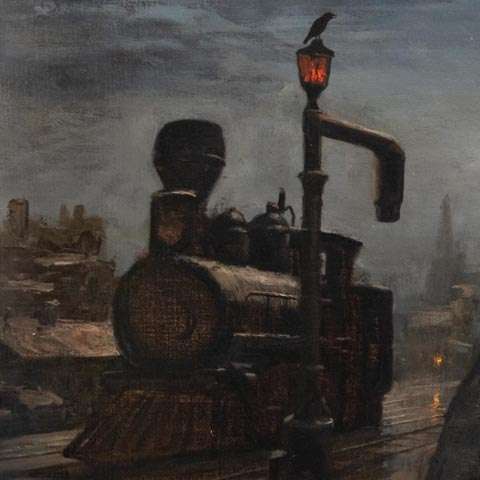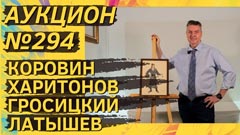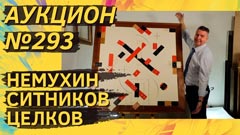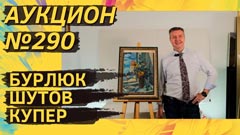
This time we decided to avoid global generalizations and loud claims to “totals”, “results”, “turnovers”, “volumes”, “statistics”. First of all, we will formulate our own observations made in real trade, “on the ground”, at the forefront of the art market. And here's what we specifically noticed in the dashing 2020:
- Those who used to buy for a million rubles are now ready to buy for two million. Wealthy people raised the bar and began to compete even more for quality. Does this mean that those who used to buy for 50,000 rubles are now buying for 100,000? Or maybe, on the contrary, from 50,000 they went to the budget of 25,000 rubles? You won't guess. Neither one nor the other. They stopped buying altogether. It was the lower segment that sank the most in 2020. In general, it is a big misconception that when buyers have less money, they go down to a more affordable segment. We don't see this. Yes, financial constraints matter. But collectors are driven primarily by passions, not free money. “25,000 have appeared — I have to buy something!” No. This behavior is rare. This logic doesn't work.
In the expensive segment (1–2 million rubles), prices increased. The segment of 300,000 rubles froze and stabilized. The lower one sank. And this happened in all the crises that we have seen before.
- The money of the “waverers” came to the market. New money. They were brought by active people who have not even had time to fall in love with art and understand it. Paintings are generally a novelty for them. But at the same time, with some animal instinct, the beginners managed to choose the best and bypass more sophisticated participants at the finish line. What kind of money did the “hesitants” spend? Firstly, these are serious savings set aside for a good foreign vacation, which was canceled several times in 2020. Secondly, this is money withdrawn from bank deposits after a mocking 5–6% per annum in rubles (despite the fact that the ruble exchange rate against the dollar dropped by 16.5% over the year). And finally, there are investment balances of 1–2 million left over from real estate and other assets. These million or two also need to be invested in something serious, but the amount is neither here nor there. You can't buy a good apartment with it. With stocks, it is a hassle. But it is possible to buy a worthwhile painting, unexpectedly. And after a short hesitation, this is what happened. We witnessed with our own eyes a situation when an “unqualified investor” beat several specialized collectors, bought a high-quality work at a good investment price and then asked: “Tell me, did I buy a good artist?”. And he is not alone. Cheek brings success. And this is another of the explanations for the first point — why the competition for investment-grade stuff has grown.
- Works that were kept for a rainy day appeared on the market. This is a plus for the market, and luck for experienced collectors. But humanly — alas and ah. A series of severe personal tragedies, financial dramas, colossal blows to the family economy have led to a predictable effect. People took to auctions and galleries paintings that hung on the walls or were kept in closets for 40–50 years. Some of the owners did not realize their true value. Pictures appeared in their families on the occasion, as a gift from friends-artists, hung and stood just like that. And it suddenly turned out that the sale of strange abstract paintings of the 1960s artists is able to solve the primary financial issues and even create a reserve for the future.
Well, in general. People are tired of waiting and postponing the sale until the mythical bright times. They keep coming and coming. In the 12 years since the last satisfying 2008, the sense of the future has blurred. Many are starting to live in the here and now. And they can be understood.
- Pricing in the upper and upper middle segments shifted to dollars and euros. This was not the case at the beginning of the year. But when the dollar reached 80 rubles, and the euro reached 93 rubles, then everything happened naturally. The participants in the transactions are adequate people: there are discounts, concessions, no one breathe down your neck with a calculator, but for the sake of simplicity, agreements began to be fixed in currency according to the exchange rate. To illustrate this, let me remind you that on January 1, 2020, the dollar was worth 61.9, and the euro was worth 69.4 rubles. So there were no options.
Yes, the middle and lower price segments were not affected by dollarization. What cost less than 300,000 rubles remained so.
- WhatsApp has become the main technology for selling art. That is, not even online auctions, but banal messengers. The fear “to expose a thing on the Internet” has become much less over the past years, people get used to it. But the fear for the publicity of the sales did not go away completely. How will it go away? Attempts to impose a large quasi-tax on sellers, pressure around the control of payments to individuals and other threats from the state and its accredited organizations have not gone anywhere. This continues to create an atmosphere of distrust and undermine civilized public sales.
- The Moscow “half-lockdown”, access control for personal vehicles and other restrictions did not stop art sales. And in some cases they even whipped up. Surprisingly, we held one of the most successful online auctions at the beginning of the quarantine. It was fortunate that the authorities did not close the online trade. And, most importantly, they allowed transport companies to work and did not paralyze the delivery of paintings.
- In 2020, new galleries were opened and important private museums were created. Incredible but true. What drove their organizers? Thinking people understand that the coronavirus crisis will end one day, life will go on, and the creation of a serious infrastructure for art still takes time. Because nine women won't have a baby in one month. That is why some people made the most of 2020. In addition, the crisis turned out to be a good moment for private museums and galleries to buy at low prices, a good time to replenish their collections.
- The counterfeit market has transformed. The crooks have expanded the “mass range”. They especially hit the nonconformists. In 2020, Vladimir Nemukhin, Anatoly Slepyshev, and a number of other 1960s artists joined the risk group along with the traditional Zverev and Yakovlev. Especially Nemukhin. Why? It is a sign of recognition and a reaction to the growing popularity of post-war unofficial art. New collectors are increasingly coming to the market of the 1960s, new investors have heard about it, and all of them, due to inexperience, can commit imprudent actions: buy without expert appraisal and cheaply at “unknown” small foreign auctions. Where they are welcome with open arms.
Now, from the observations of 2020, let me turn to the wishes for the new year 2021:
- To “hesitant” art investors:
You are great. You are doing everything right. Especially if you are investing long term. if you think you've taken the road of art by accident, because of money, that's not the case. It's not about the road we take — it's what's inside of us that makes us choose the road. So we expect to meet many of you soon in the Secret Society of Art Lovers. You will see.
- To the young, the 30+ generation:
Friends, in the new year we wish you to make your first art purchases. After all, it is better to start collecting not at 50, but after 30. Collecting, reading, interacting with artists is a lifelong adventure. And if you're lucky, you'll be fully equipped for the future.
That's about all that's important.
Only a couple of expert assessments in the end.
There were approximately $ 35 million in auction, gallery sales, and private transactions for all of Russia in 2020. That is almost the same as last year in 2019. No better and no worse. Another question: what does it give? What signal and to whom? To international auction houses? To international galleries? Or to the mythical Chinese investors that many people dream of? What to do with this knowledge? That's just it.
The more you know, the more you realize how little you really know. No figures of expert estimates of turnovers and the most accurate statistical calculations for small provincial “club” markets make sense. They are even disorienting if you do not understand the real economic processes behind them. Why talk about the art market in general, if there is no “general” art market. There is no single “homogenized” art market that grows and falls. It would be more correct to talk about dozens of micro-markets with thousands of very specific transactions that can be successful to varying degrees. It is wrong to judge successes and failures “in general”. If Zverev has not sold ten times, then you cannot conclude that Zverev's market fell. It's not about Zverev. There's just something wrong with the specific conditions. After all, many others sold Zverev perfectly at the same time. There are no wrong markets. There are wrong prices. It is worth reducing them by 25% — and a miracle: the market will start growing instantly.
The authorities contributed too much to the failures of the year. It's like a road roller. It makes no sense to compare the successes of those who were de facto allowed to work with those who were prohibited from working in the heat of sanitary rage. And with closings, they clearly went overboard. Galleries, museums — why close them? People obviously do not go to exhibitions with their last bit of strength, in snot and with a temperature of forty. This is not the subway or a cab, not a desperate situation. Therefore, it is pointless to compare everything that happened in 2020 with the previous year. The 10 months that have passed since the beginning of quarantine is an unpredictable, artificial, externally created situation. Absolutely non-competitive. It is simply incorrect to judge the state of the market by this situation. This is like judging the level of the rental industry when streaming services are working and cinemas have been closed for quarantine.
What can we expect in 2021? It should get better by the fourth quarter. It's a long time, yes. But there won't be instant relief. We will feel the effects of vaccination in 3–4 months. It will take at least six months for businesses and clients to lick their wounds. It is naive to expect that negative trends will be interrupted. In the new year, government agencies will start attacking art businesses with renewed zeal — you don't even need to be a prophet here.
But it has always been like this. So get to work, friends! With twice the effort! All business people — good luck and only good luck in the new year!
Vladimir Bogdanov, Konstantin Babulin, specialists of the ArtSale.info auction
- Log in to post comments










